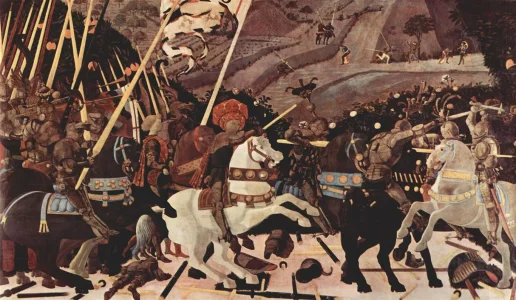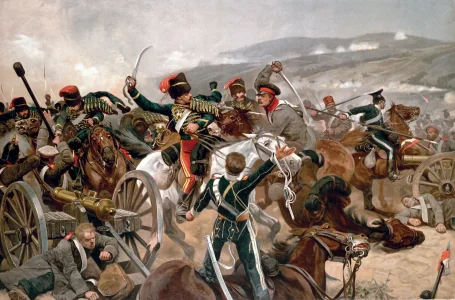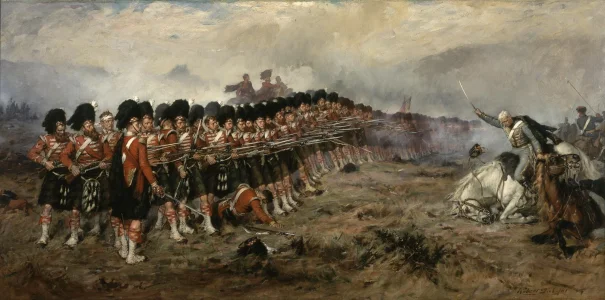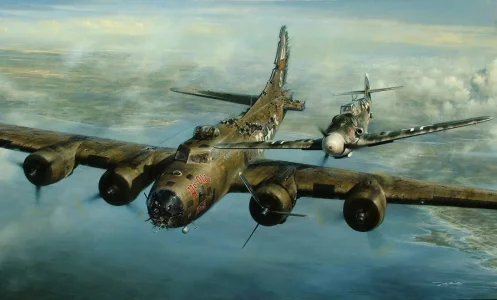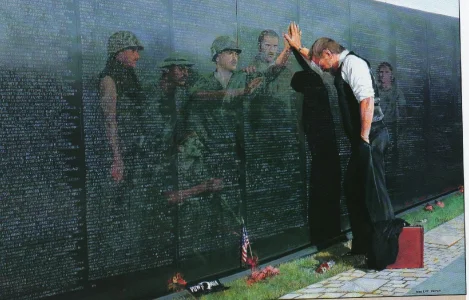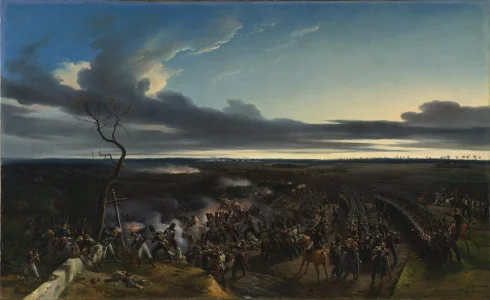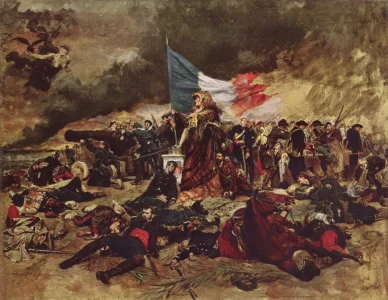- Joined
- Nov 13, 2019
- Messages
- 76
- Points
- 143
Louis-François Lejeune, who was made a baron de l’Empire in 1810, was a quite extraordinary individual who succeeded in combining a military career with his artistic vocation. He initially studied with Pierre Henri de Valenciennes, a landscape painter, before attending the Ecole royale de peinture in 1789. He subsequently joined the army in 1792, at the age of seventeen. Made aide de camp to Berthier in 1800, he was later promoted to général de brigade, in 1812. He was wounded in battle on numerous occasions and left detailed memoirs of the campaigns he participated in. Over the course of his life he pursued parallel careers: although his military participation came to an end in 1835, he continued to exhibit his paintings until 1845, cementing his reputation as one of the best battle scene painters of the imperial period.
Having served as a topographer for the Dépôt de la Guerre (the cartographic wing of the French army during the Revolutionary period and early nineteenth century), Lejeune took the relief genre and incorporated it into his vast compositions. These works combined a realistic depiction of the battle with accurate observations influenced by his experience working with the maps and military diagrams that he had access to as a military staff member. His Bataille de Marengo met with great success at the Salon of 1801, whilst those depicting the battles of Aboukir and Lodi were equally well received at the 1804 event.
Lejeune submitted his La Bataille des Pyramides to the Salon in 1806. The victory of the French army – which on 21 July 1798 saw General Bonaparte triumph over the Mamluks of Mourad Bey on the plains of Giza – had already entered into legend, reproduced and glorified by some of the greatest artists of the period. Lejeune’s panoramic and narrative interpretation is in stark contrast to Gros’ La Bataille des Pyramides (external link in French), a grandiose work of propaganda constructed around the central figure of Napoleon, the providential hero astride his rearing horse. Lejeune’s battle is presented from a wide perspective, making it easier to depict the formations of the armies and presenting the viewer with a clear understanding of the strategy deployed by Bonaparte. On the south bank of the Nile, the five divisions of the army have adopted a square formation. Each corner is defended by artillery, whilst protected within the square are the cavalry forces and reserve troops. The Mamluks, pushed back to the river by the French army, find themselves bombarded by the French flotilla.
Yet aside from its educational virtues as a demonstration of tactical ingenuity, the composition also consolidates Lejeune’s reputation as one of the great landscape artists, well-versed in the depiction of atmospheric effects. The splendid light that marries sky and desert, the mythical silhouette of the pyramids against the horizon, and the exoticism of the scene and its vegetation all make this painting one of the great works of the Oriental movement.
Having served as a topographer for the Dépôt de la Guerre (the cartographic wing of the French army during the Revolutionary period and early nineteenth century), Lejeune took the relief genre and incorporated it into his vast compositions. These works combined a realistic depiction of the battle with accurate observations influenced by his experience working with the maps and military diagrams that he had access to as a military staff member. His Bataille de Marengo met with great success at the Salon of 1801, whilst those depicting the battles of Aboukir and Lodi were equally well received at the 1804 event.
Lejeune submitted his La Bataille des Pyramides to the Salon in 1806. The victory of the French army – which on 21 July 1798 saw General Bonaparte triumph over the Mamluks of Mourad Bey on the plains of Giza – had already entered into legend, reproduced and glorified by some of the greatest artists of the period. Lejeune’s panoramic and narrative interpretation is in stark contrast to Gros’ La Bataille des Pyramides (external link in French), a grandiose work of propaganda constructed around the central figure of Napoleon, the providential hero astride his rearing horse. Lejeune’s battle is presented from a wide perspective, making it easier to depict the formations of the armies and presenting the viewer with a clear understanding of the strategy deployed by Bonaparte. On the south bank of the Nile, the five divisions of the army have adopted a square formation. Each corner is defended by artillery, whilst protected within the square are the cavalry forces and reserve troops. The Mamluks, pushed back to the river by the French army, find themselves bombarded by the French flotilla.
Yet aside from its educational virtues as a demonstration of tactical ingenuity, the composition also consolidates Lejeune’s reputation as one of the great landscape artists, well-versed in the depiction of atmospheric effects. The splendid light that marries sky and desert, the mythical silhouette of the pyramids against the horizon, and the exoticism of the scene and its vegetation all make this painting one of the great works of the Oriental movement.



